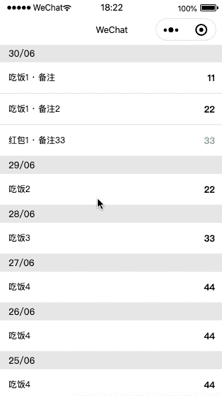PHP变量与类型扩展之类与对象
这些函数允许你获得类和对象实例的相关信息。 你可以获取对象所属的类名,也可以是它的成员属性和方法。 通过使用这些函数,你不仅可以找到对象和类的关系,也可以是它们的继承关系(例如,对象类继承自哪个类)。
请参考面向对象相关章节来查看在 PHP 里,对象和类如何实现和使用的详细描述。
使用这些函数不需要安装,它们是 PHP 核心的一部分。
二、类与对象函数大全__autoload — 尝试加载未定义的类call_user_method_array — 调用一个用户方法,同时传递参数数组(已废弃)call_user_method — 对特定对象调用用户方法(已废弃)class_alias — 为一个类创建别名class_exists — 检查类是否已定义get_called_class — 后期静态绑定('Late Static Binding')类的名称get_class_methods — 返回由类的方法名组成的数组get_class_vars — 返回由类的默认属性组成的数组get_class — 返回对象的类名get_declared_classes — 返回由已定义类的名字所组成的数组get_declared_interfaces — 返回一个数组包含所有已声明的接口get_declared_traits — 返回所有已定义的 traits 的数组get_object_vars — 返回由对象属性组成的关联数组get_parent_class — 返回对象或类的父类名interface_exists — 检查接口是否已被定义is_a — 如果对象属于该类或该类是此对象的父类则返回 TRUEis_subclass_of — 如果此对象是该类的子类,则返回 TRUEmethod_exists — 检查类的方法是否存在property_exists — 检查对象或类是否具有该属性trait_exists — 检查指定的 trait 是否存在三、使用范例在这个例子中,我们首先定义了一个基类和该类的扩展。 这个基类描述了普通的蔬菜,关于它是否可食用及其颜色。 子类 Spinach 添加了烹饪的方法和另一个检查是否已烹饪的方法。
Example #1 classes.inc
<?php // base class with member properties and methods class Vegetable {var $edible;var $color;function Vegetable($edible, $color='green') { $this->edible = $edible; $this->color = $color;}function is_edible() { return $this->edible;}function what_color() { return $this->color;} } // end of class Vegetable // extends the base class class Spinach extends Vegetable { var $cooked = false; function Spinach(){ $this->Vegetable(true, 'green'); } function cook_it(){ $this->cooked = true; } function is_cooked(){ return $this->cooked; } } // end of class Spinach?>
接下来我们从这些类中实例化了两个对象,并打印了他们的信息,包括了他们类的继承关系。 同时我们也定了一些实用函数,主要为了漂亮地打印出这些变量。
Example #2 test_script.php
<?php include 'classes.inc'; // 实用函数 function print_vars($obj) {foreach (get_object_vars($obj) as $prop => $val) { echo 't$prop = $valn';} } function print_methods($obj) {$arr = get_class_methods(get_class($obj));foreach ($arr as $method) { echo 'tfunction $method()n';} } function class_parentage($obj, $class) {if (is_subclass_of($GLOBALS[$obj], $class)) { echo 'Object $obj belongs to class ' . get_class($$obj); echo ' a subclass of $classn';} else { echo 'Object $obj does not belong to a subclass of $classn';} } // 实例化 2 对象 $veggie = new Vegetable(true, 'blue'); $leafy = new Spinach(); // 打印这些对象的信息 echo 'veggie: CLASS ' . get_class($veggie) . 'n'; echo 'leafy: CLASS ' . get_class($leafy); echo ', PARENT ' . get_parent_class($leafy) . 'n'; // 显示蔬菜的属性 echo 'nveggie: Propertiesn'; print_vars($veggie); // and leafy methods echo 'nleafy: Methodsn'; print_methods($leafy); echo 'nParentage:n'; class_parentage('leafy', 'Spinach'); class_parentage('leafy', 'Vegetable');?>
一个重要的东西是注意在上面的例子中,对象 $leafy 是 Spinach 的实例(Vegetable 的子类),另外脚本的最后部分会输出以下信息:
[...]Parentage:Object leafy does not belong to a subclass of SpinachObject leafy belongs to class spinach a subclass of Vegetable
相关文章:

 网公网安备
网公网安备